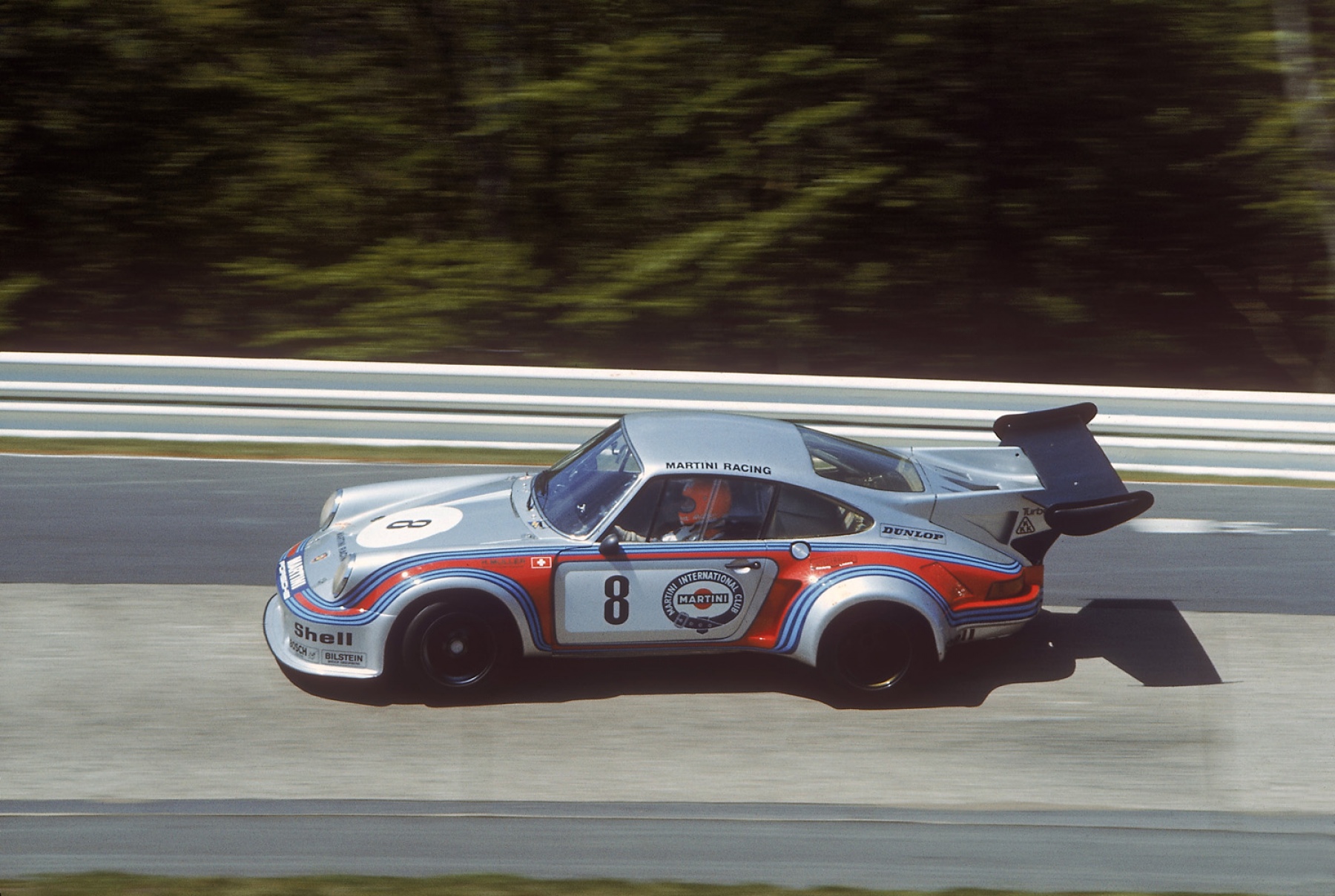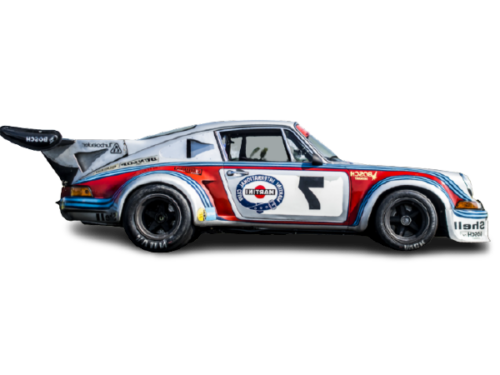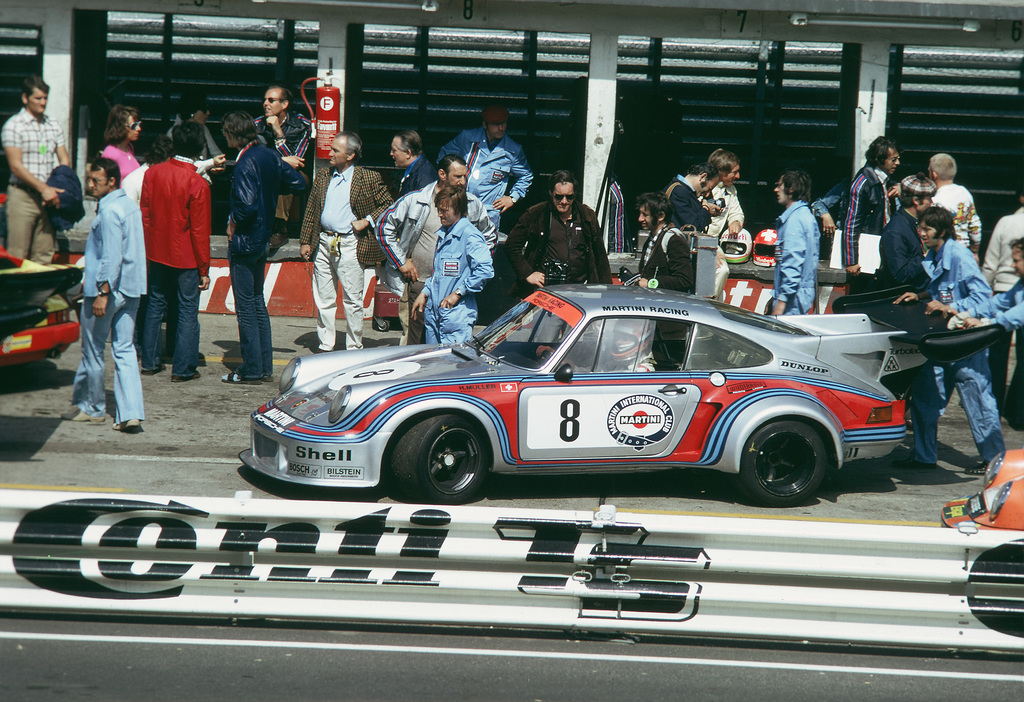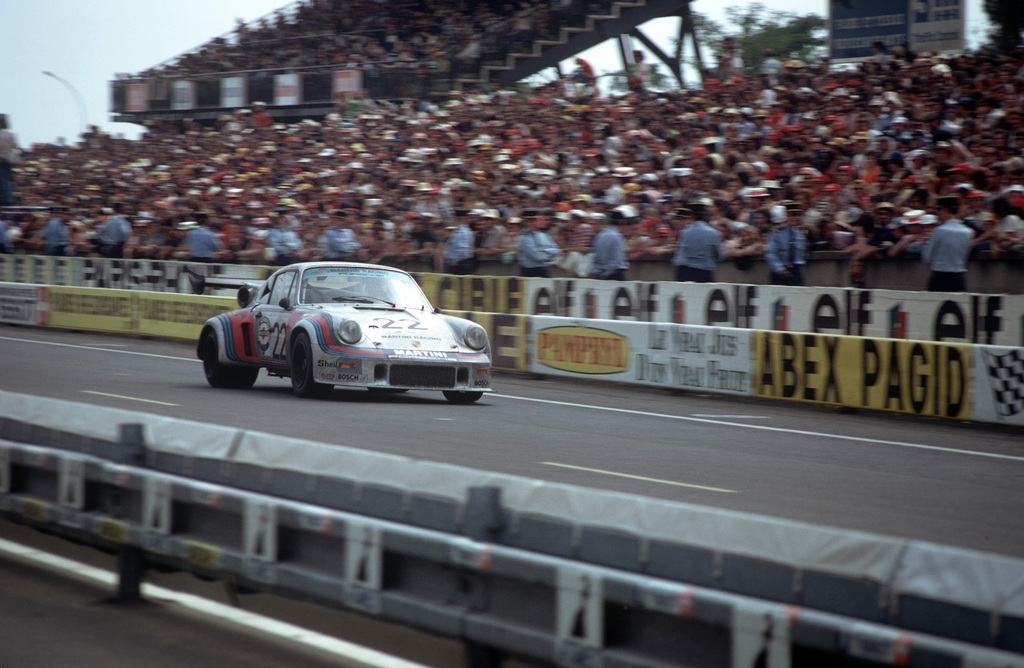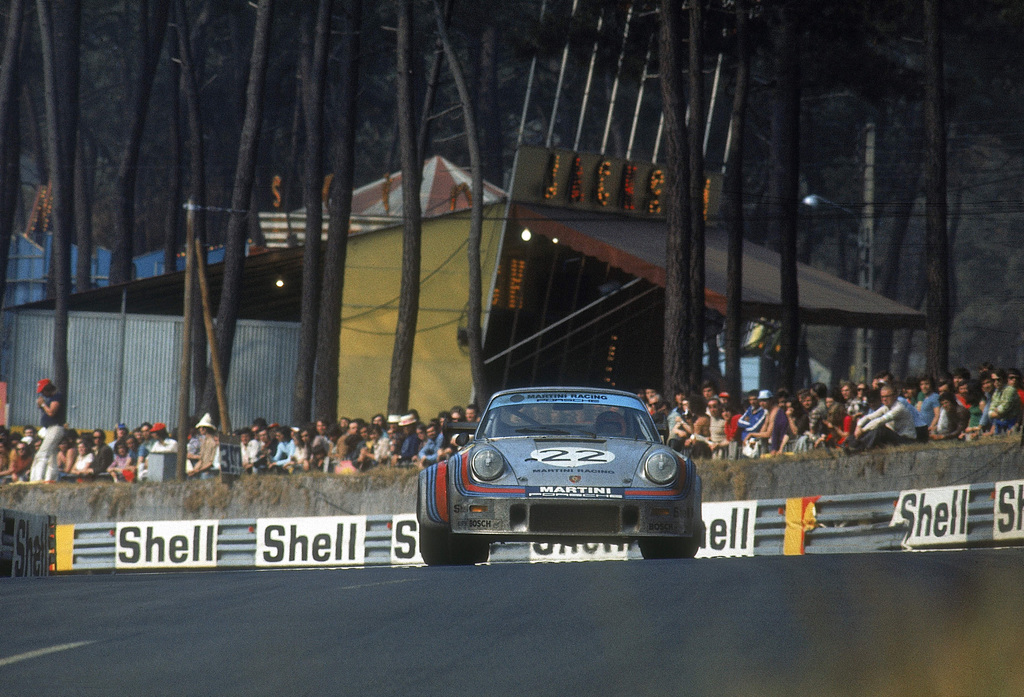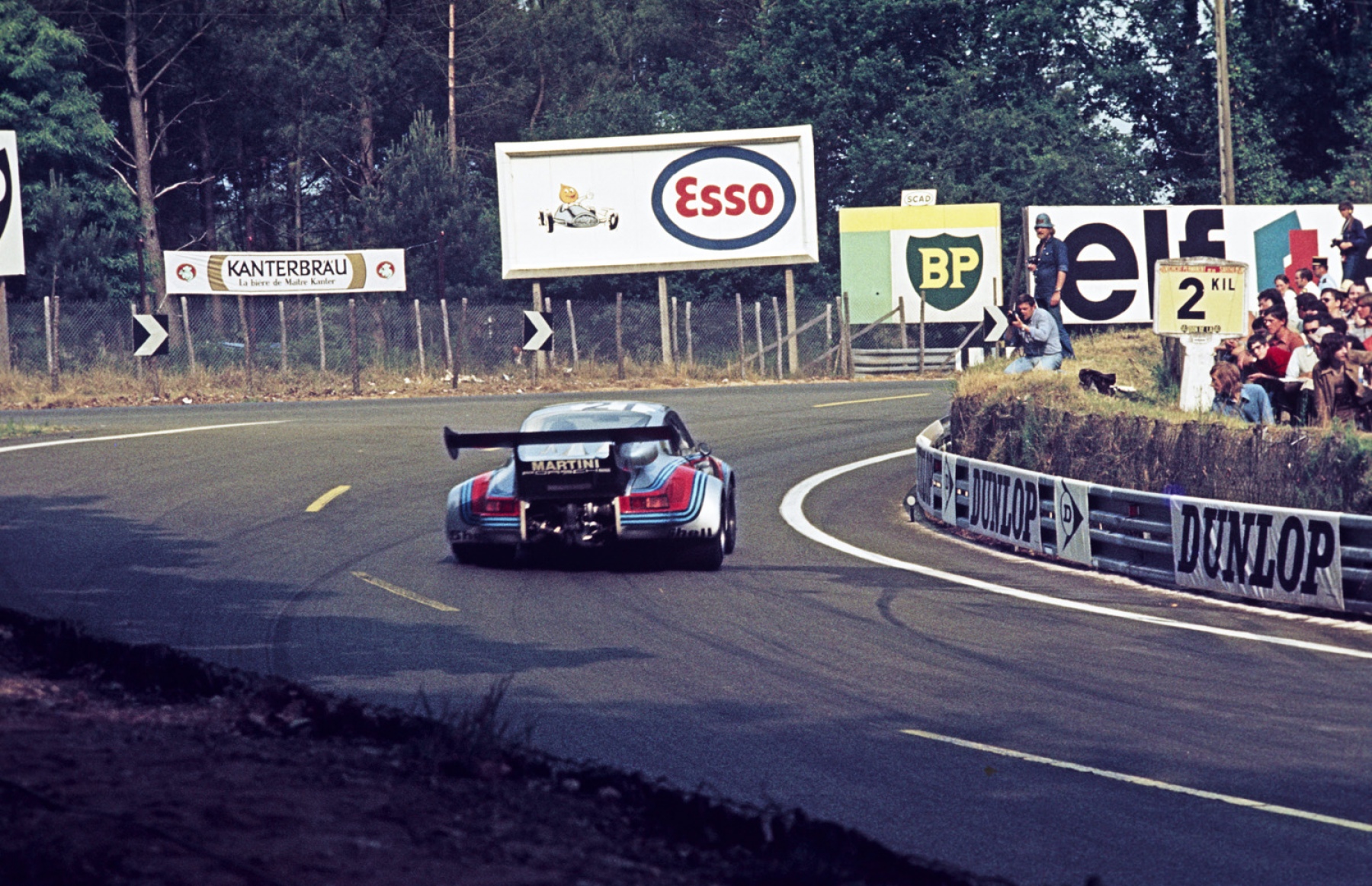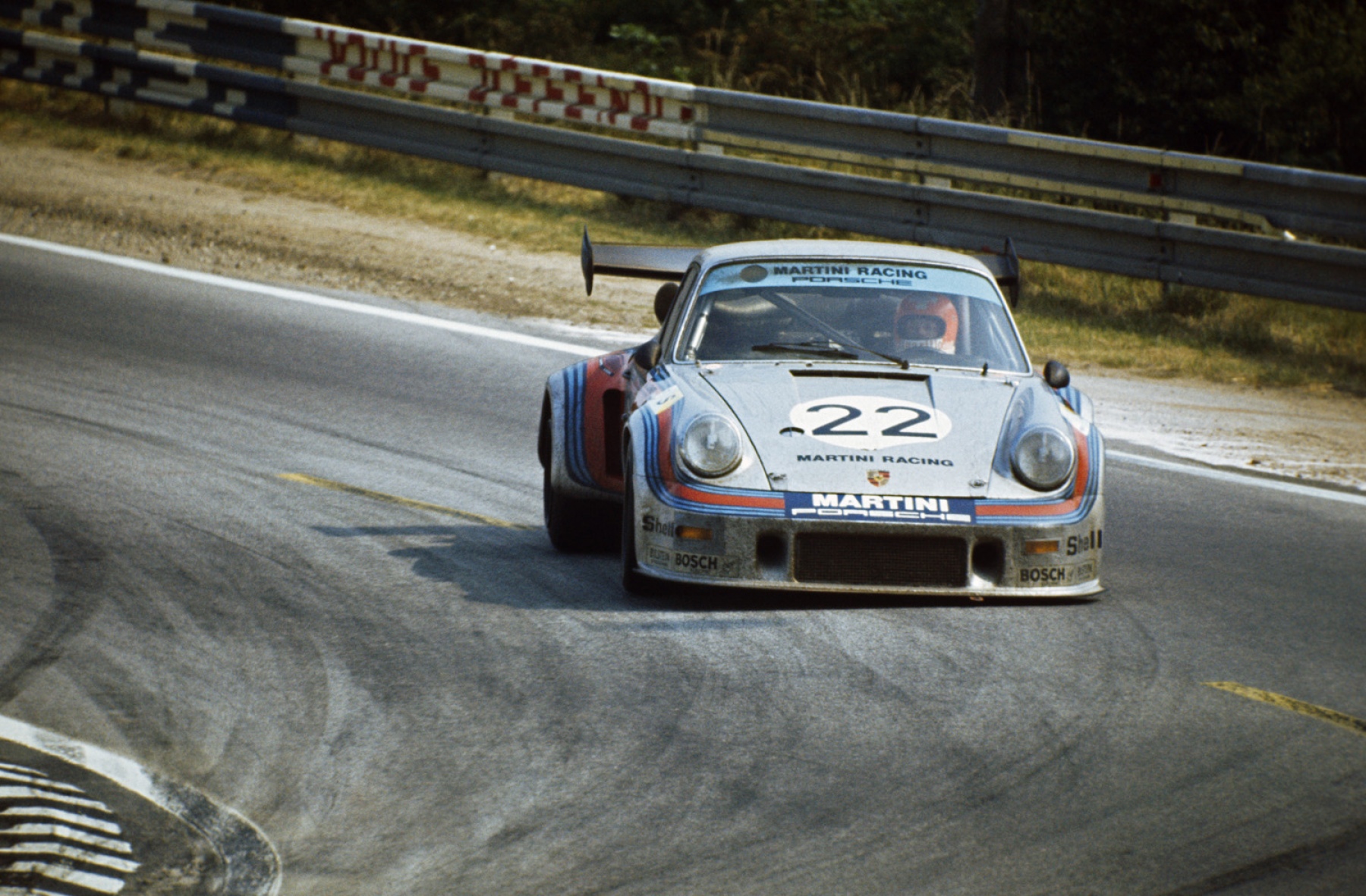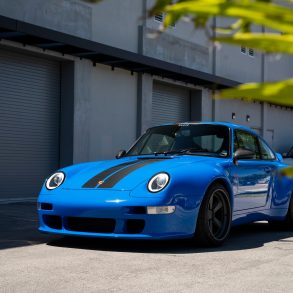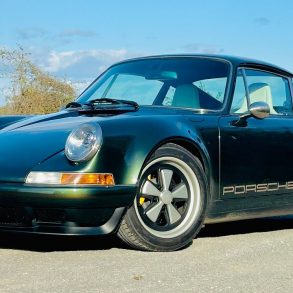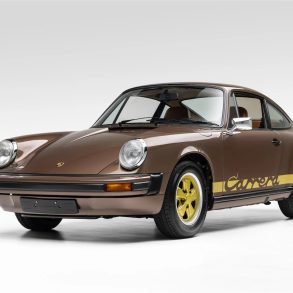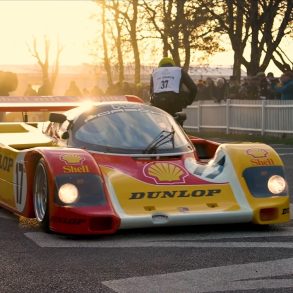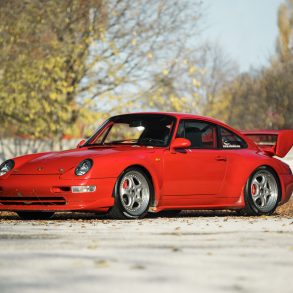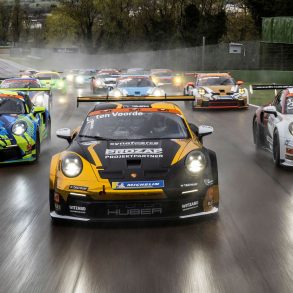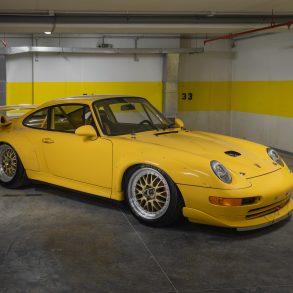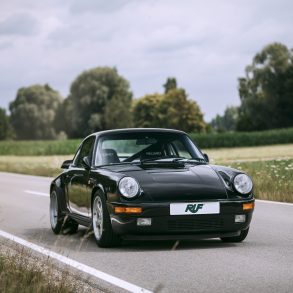1974 Porsche 911 Carrera Turbo 2.1 – Ultimate Guide
For the 1974 racing season 911 Carrera RSR 3.0 and RSR Turbo 2.1 were created – the 3.0L for the customer teams and the 2.1 turbo for Porsche’s own team. The 911 Carrera RSR Turbo 2.1 developed 338-368 kW peak power, but as the engine was small, the turbo lag was big and it wasn’t as easy to drive out of the corners as it was with the 3-litre normally aspirated car. This was the first turbocharged Porsche 911 and the first turbocharged racer ever to take on the Le Mans challenge.
The 911 Carrera RSR Turbo 2.1 was fitted with a newly-developed 2,142 cc engine. As a handicap factor was applied on turbocharged motors, the new Porsche would start in the three-litre prototypes class. Its six cylinder featured a magnesium crankcase, the con-rods and inlet valves were made of titanium. For the turbo technology, the engineers applied their experience from the Can-Am project. The production-based racer with the bodyshell of the 911 was a masterpiece of lightweight design, bringing just 825 kg to the starting line. In order to avoid a change in the handling characteristics over the distance, the fuel tank was placed on the co-driver’s side. The suspension featured wishbones on all corners.
Thank You CanAm
Porsche had reached the physical limits of the production-based flat-six with the three-litre competition engine developed during the 1973 season. Using the lessons learned with the mighty 917/30 Can-Am car, the German manufacturer turned to forced induction instead.
The Can-Am Challenge Cup was the wildest racing series ever created. It was an SCCA/CASC sports car racing series from 1966 to 1987 and it featured the fastest, most powerful sports cars running under a minimal-rules regime that allowed the widest scope for innovation. The lack of rules and resulting innovation spawned some of the most outlandish vehicles of all time.
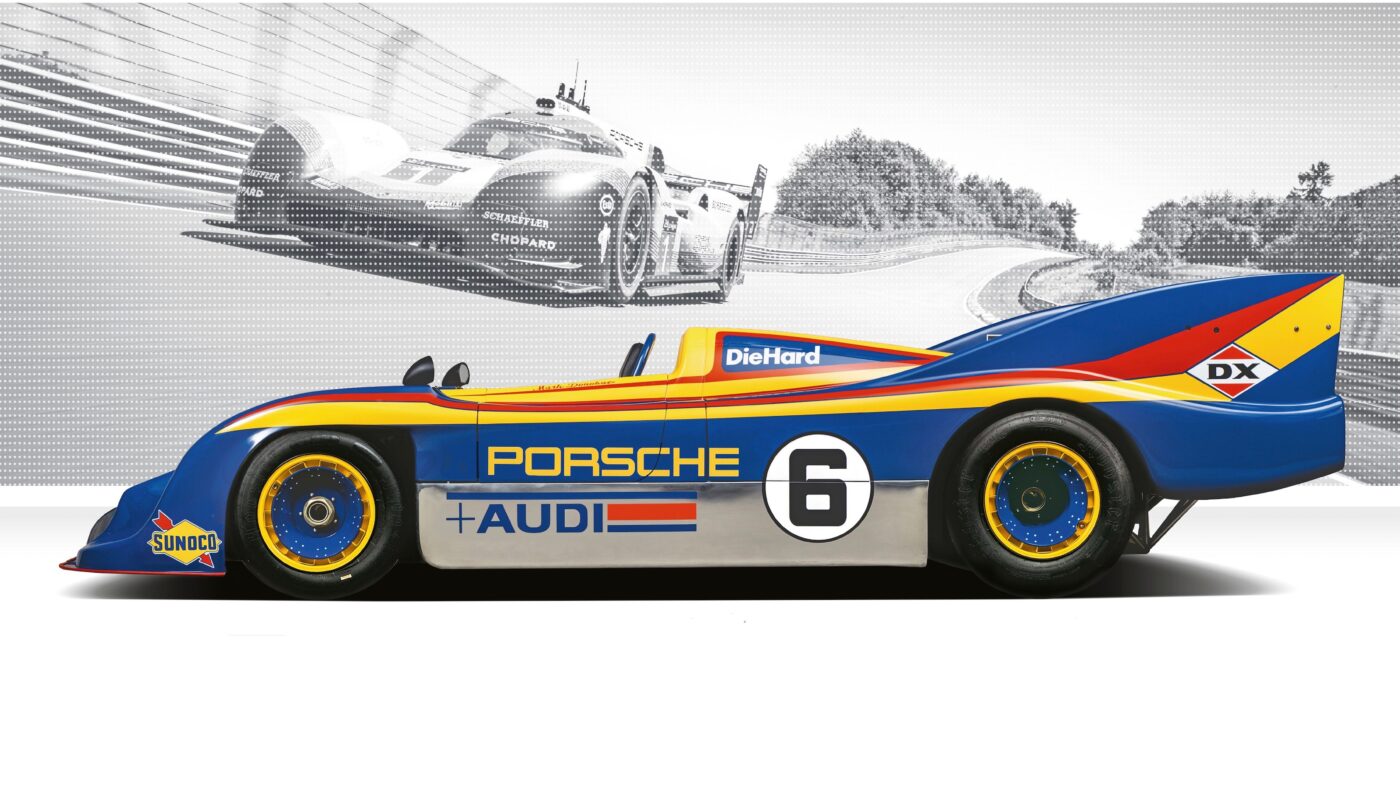
The 917/20 was Porsche’s first turbocharged racer, using two Kühnle, Kopp & Kausch turbos to produce a brutal 850 hp from its 5.0-litre flat 12 engine. In the hands of George Follmer, the car dominated that year’s championship, and in doing so helped to irrevocably change the face of the motorsport landscape during the Seventies and Eighties. The big driver of success was turbocharging. A year later, Porsche upped their game even further with the Porsche 917/30, a 5.4-litre evolution of the previous season’s machine that could turn out around 1,500hp in qualifying trim.
Once again, the twin turbocharged car was the class of the CanAm field, comfortably propelling Mark Donohue to that year’s title. The 917/30 was so effective that it was almost single-handedly responsible for the decline of the series (which took a two-year hiatus after the 1974 season). Thanks to the dominant fashion of the 917/30’s success, turbocharging had well and truly proved its worth to Zuffenhausen’s board, who immediately set about applying the lessons learnt on the track to furthering the Porsche 911 on the road, via a new Turbo model.
To help the development of the new 911 Turbo ahead of its launch for the 1975 model year though, Porsche wanted to prove the abilities of a turbocharged 911 in competition. To do so, they created this: the Porsche 911 Carrera RSR Turbo 2.1. For the turbo technology, Can-Am experience helped Porsche find a way to minimize the turbo lag with the help of a bypass valve on the exhaust side of the turbo. With a single KKK turbocharger with an intercooler placed under the large rear wing and received air through a NACA inlet, the engine in the RSR Turbo 2.1 generated 500 hp at 1.5 bars turbo pressure. It was capable of accelerating the RSR Turbo 2.1 from 0 – 60 mph in just 3.2 seconds (in 1974) and onto a top speed of 186 mph.
The Details
Side-by-side Porsche developed turbo-charged version of the 911 competition and road cars. With the production cars yet to be introduced, the new 911 Turbo racer was forced to compete as a prototype in 1974. Because it was building a car for the prototype class, Porsche had a three-litre displacement limit for naturally aspirated engines which had to be complied with. Using the equivalency factor of 1.4 for forced induction engines meant that the new racing could only displace 2,143 cc, whereas the upcoming road car would feature a three-litre turbo engine. To achieve the size reduction from the 2.8 and 3.0 competition engines previously used, Porsche engineers used a bore of 83 mm and the same 66 mm stroke of the original 911’s two-litre engine. Underlining the strength of that flat six, introduced a decade earlier, the 911 Carrera RSR Turbo 2.1 featured the exact same forged crankshaft.
Based on the RSR race car engine, Porsche retained the magnesium-alloy crankcase, titanium connecting rods, enlarged oil-pumps, dual ignition, Bosch mechanical injection and sodium-cooled valves. A single KKK turbocharger was hung onto the back of the rear mounted engine. As a result, it was exposed and received some cooling, which was desperately needed to keep the temperature of the turbines under control. The relatively hot, compressed air was fed through an intercooler back to the engine. Depending on the boost levels, the flat-six produced between 470 and 500 bhp at the engine’s redline of 8,000 rpm. At lower engine speeds, the dreaded turbo lag was still an issue and required the drivers to adjust their driving style. The potent new turbo engine was mated to an existing RSR 3.0 gearbox, which struggled to cope with the added power.
The new drivetrain was mounted in a regular production RS shell and the first car built over the 1973/74 winter had competed in the previous seasons as one of the works RSRs. An advantage of running in the prototype class was, that there were relatively few restrictions with regards to the aerodynamics. The result of these changes was a drastically different car than the RSR 3.0. Porsche fitted huge rear wheels and a titanium/aluminum suspension to match that saved over 66 lbs. This required massive rear wheel arches which were only matched by the rear wing that was painted black as not to distract from the lines of the car.
For aerodynamics, a very deep from air-dam was fitted and a monumentally large rear wing. In order to divert attention from the wing to suggest a closer relationship to the production car, it was painted black. During the development process, the fuel tank was moved inside the cockpit. This reduced the effects of the fuel load on the weight balance of the car. Weight reduction measures included plastic hoods, fender flares and doors (each weighing 2.25 kg/5 lb) and the safety cage was made of aluminium. The fuel tank was located in the co-driver’s position.
The Results
Porsche extensively tested the car at the Le Mans trails and found it was 11 seconds faster than a 3.0 RSR. Four cars were made for the 1974 season and they debuted at the Monza 1000km. The real killer was that because it was designed to the FIA’s Group 5 rules, the car would have to race against bespoke sports prototypes. Unfortunately, competing with the Matra-Simca MS670C, Gulf Mirage GR7 and Alfa Romeo 33TT12 as well as the Ferraris was unable to compete for outright victories.
The 911 Carrera RSR Turbo 2.1 only started once at Le Mans and finished second overall in 1974. The Martini & Rossi-livered cars were raced in the World Championship rounds by Gijs van Lennep, Herbert Müller, Manfred Schurti and Helmuth Koenig. The best results were a third at Spa and second place finishes at the Watkins Glen 6 Hours and the 24 Hours of Le Mans.
Running the cars did offer the German manufacturer the opportunity to showcase the capabilities of the turbo engine and also prepared them better for a new silhouette class that was being considered by the sport’s governing body for the 1975 or 1976 season.
Despite the encouraging results, Porsche opted to shelve the cars during the 1975 season and instead focus on the development of a new generation of Group 4, Group 5 and Group 6 cars based on the turbo engine first used during the 1974 season. Known as the 934, 935 and 936 respectively, these cars would go on to dominate sports car racing during the second half of the 1970s. Porsche used four 911 Carrera RSR Turbo 2.1s during the 1974 season, all of which have survived but are only very rarely seen.
Videos
Pictures


